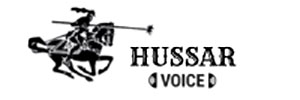A great resume frames the candidate’s career story and how their accomplishments were an asset to their employer’s business
 I have pointed out before, but I will again: every hiring manager, as each is a unique individual, evaluates candidates differently; hence, what I look for in a candidate’s resume will understandably differ from what other hiring managers look for.
I have pointed out before, but I will again: every hiring manager, as each is a unique individual, evaluates candidates differently; hence, what I look for in a candidate’s resume will understandably differ from what other hiring managers look for.
To decide if I want to take the time to read a candidate’s resume in-depth, I spend between 10 to 20 seconds skimming it, searching for what I believe every recruiter and hiring manager looks for: evidence the candidate has contributed positively to their previous employers (revenue generated, savings, efficiency improvements, percentage increases or decreases) and not just maintained the status quo.
The adage, “There is beauty in simplicity,” certainly applies to resumes. Stylish layout, fancy fonts, and opinion statements (e.g., “I’m a team player,” “I pay attention to details.” Unless your claim is quantified, it is just your opinion) do not trump a candidate who showcases their results.
 Getty Images |
When reviewing a resume, I am looking for a career story showing how the candidate contributed to their employer’s business and how they manage their career – their commitment to their career, their desire to improve themselves, and their progress.
When writing your resume, you cannot go wrong keeping the following in mind:
A great resume frames the candidate’s career story and how their accomplishments were an asset to their employer’s business.
The same applies to your LinkedIn profile, where you have much more room and options (upload projects, videos, articles) to tell your career story.
Getting back to my skimming resumes, in an ideal world, recruiters and hiring managers would spend five to 10 minutes reviewing the resumes they receive. We do not live in an ideal world. A hiring manager has only so many hours in a day to review hundreds of resumes, which their applicant tracking system (ATS) has passed on, hoping to find a few qualified candidates.
Like most hiring managers, I do not have the luxury of time; thus, I skim resumes to make my initial “yes/no” decision. A skimmable resume (an important factor seldom mentioned by self-proclaiming “experts”), along with the right content, is most likely to catch my attention.
You can make your resume skimmable by:
- Not centring or justifying any of your text.
- Left-align dates and locations.
- Maintaining consistency in font size (10 to 12) and type (Arial or Times New Roman).
- Bolding either your roles or your companies, not both.
- When writing numbers, use digits.
- Maximizing the first five words of your bullet points.
- Having a separate “Skills” section.
I will not read a resume if there is no link to the candidate’s LinkedIn profile, which should appear beneath their contact information. I find the lack of a LinkedIn profile link suspicious, as if they are hiding something. Every job seeker on the planet knows that besides reviewing their resume, the hiring manager will scrutinize their LinkedIn profile and digital footprint to evaluate whether they are interview-worthy, so include a link to your LinkedIn profile to make it easy for the reader.
Typos, spelling mistakes, and grammatical errors turn me off. Unless the content (READ: quantified results, skills) is exceptional, if there are more than two errors, I will reject the resume. Given that a resume is a crucial job search document, I do not think it is unreasonable to ask that it be error-free.
There you have it, a resume that will most likely lead me to call the candidate will have what I am primarily looking for:
- A LinkedIn profile link
- Results (numbers)
- A career story
- Error-free
Skimmable resumes get extra points.
Now you know what I look for in a resume. However, there is a caveat: a candidate must include a customized cover letter to get me to read their resume. A candidate’s cover letter is more important to me than their resume; therefore, I only read resumes accompanied by a cover letter.
Why? Based on my experience, if the candidate did not take the time to write a cover letter tailored to the position, they are likely spraying and praying, which, unfortunately, is a common job search strategy. Job seekers who spray and pray just want any job, which is not appealing to me.
A cover letter also helps me decide whether to read a candidate’s resume by:
- Allowing me to evaluate their writing skills.
- Seeing if they have the professional acumen to explain any employment gaps.
- Assessing their ability to sell me on how their skills and experience align with the job requirements.
I believe I speak for all hiring managers when I say the importance of your resume presentation and content cannot be overemphasized. Do not, however, underestimate the power of a customized cover letter. Still, even if your cover letter convinces me to read your resume, if it does not contain what I am looking for, then … next!
Nick Kossovan, a well-seasoned veteran of the corporate landscape, offers advice on searching for a job.
For interview requests, click here.
The opinions expressed by our columnists and contributors are theirs alone and do not inherently or expressly reflect the views of our publication.
© Troy Media
Troy Media is an editorial content provider to media outlets and its own hosted community news outlets across Canada.

